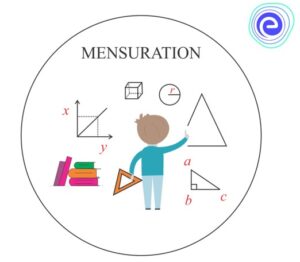
International students have a wide range of options in the American educational system. Even students from the United States may feel overwhelmed by the possibilities given the wide variety of institutions, courses, and places available. Making the best educational choices for you is essential if you’re relocating to the United States with your family. Becoming familiar with the American educational system when you start your school search is crucial. Your options will become more focused as you establish your education plan and understand the procedure. We will thus provide some facts regarding the US educational system today. Let’s begin, then.
Contents
The educational system in America
The frameworks that make up the American educational system are determined at the state level. For most kids, compulsory schooling begins around five or six and lasts for 12 years straight. Here is the educational structure of the US education system.
Pre-School (Pre-Kindergarten, or Pre-K)
Pre-school, sometimes referred to as Pre-Kindergarten or Pre-K in the US, is optional. Pre-K lessons typically last a year or two for kids between the ages of five and six, while state-by-state regulations vary. Private businesses, nonprofit groups, and independent childcare providers run preschools.
Primary School (Elementary)
In the United States, elementary education is mandatory starting at roughly age six. Starting in kindergarten, elementary education typically consists of five or six grades. The curriculum is determined at the state and local levels, but it is comprehensive and includes language studies, physical education, and fundamental reading and math abilities.
Junior High
After primary school, the educational systems in many states varied somewhat. Some choose to use middle school, while others choose junior high, which begins one year later than conventional middle school. Most kids start middle school at the age of 11 and junior high around the age of 12.
Senior High School
Students will enter high school at roughly 14 if the state maintains a middle school system. Students transfer from junior high to senior high school one year later, often at the age of fifteen.
Postsecondary education
The US stands out because its educational institutions are authorized nationally or nationally rather than through a central organization. In the USA, there are varieties of postsecondary education systems. They consist of:
- A state university or college.
- Private university or college.
- A local university.
- Technology Institute.
Every type of institution offers students a distinctive educational experience, providing them with the freedom to select the direction that is best for them and their future. Several students often seek Help With Online Class during this time due to instant academic pressure. In another article, we discuss it. Now let’s get back to the educational system in the USA.
How does the grading system work for coursework in the USA?
The official copies of your work are on your academic transcripts. It includes your grades and grade point average (GPA), indicators of your academic success in the United States. Ratios are often used to grade courses, and these percentages are then translated into letter grades.
The US grading scale and GPA might be perplexing even for overseas students. There are many different ways that grades are interpreted. One scenario is when two students with different educational backgrounds send their transcripts to the same university. Both students had GPAs of 3.5, but one went to an intermediate high school and the other to a selective, demanding institution. The university could view their GPAs differently because the criteria at the two institutions are so dissimilar. Therefore, the following are important considerations:
- Find out what the last level of education you finished in your native country equals in the US.
- Pay particular attention to the entrance specifications of each university, college, and degree program since they may differ from the institutions.
- Consult a guidance counselor or educational adviser frequently to ensure you keep up with the standards.
The academic year of the USA education system
The academic year typically starts in August or September and lasts until May or June. It is best for overseas students to begin their university studies in the United States in the fall since this is when most new students enroll. At the start of the school year, there is a lot of enthusiasm, and kids make a lot of beautiful friendships while they are all transitioning to a new stage of academic life. Many courses are also intended to be taken in order, beginning in the fall and continuing throughout the year.
Many institutions divide the academic year into two parts, known as “semesters.” The “trimester” calendar, which has three terms, is used in some schools. Others further divide the year four times every quarter, with an additional summer session as an option. The educational year is generally made up of two semesters or three-quarter terms if the summer session is excluded.
How much does education cost in the USA?
In the USA, parents do not pay tuition to attend public schools, supported mainly by taxes. There may be additional expenses for items like clothing, transportation, and educational supplies. The prices are frequently significant if you choose a private school instead of the public system.
There are private, fee-paying schools in every state, and the price depends on the location and the curriculum it offers. Although some state average prices are over USD 20,000 yearly, the national average is about USD 10,000.
Conclusion
There are expenses associated with schooling your children in the USA, regardless of the path you decide is best for your family. Most classrooms will have no more than 20 students listening to a lecture at once since they prioritize quality above number. The American educational system emphasizes interactive and hands-on learning, and professors are frequently accessible after hours to help students who need extra support. With student organizations, campus life in American colleges and universities also provides a lot of extracurricular growth.





nxediyunlandayi.p0nEWEYST6iP
xyandanxvurulmus.IOsO5acZM8YX
politicalizing xyandanxvurulmus.JWRNEPSK3WTN
bahis siteleri incest category vurgunyedim.i4u2oIXqV1Nv
bahis siteleri sikis yaralandinmieycan.3c5IHj2B7uTN
bahis siteleri porn citixx.BKTV4x8cGebz
porno hyuqgzhqt.t9UEemsym9D3
craft porn ewrjghsdfaa.KivVNv8mYoIu
bahis siteleri child porn wrtgdfgdfgdqq.lq2KTqjHDxs1
I gave https://www.cornbreadhemp.com/collections/full-spectrum-cbd-oil a prove for the cardinal habits, and I’m amazed! They tasted great and provided a sanity of calmness and relaxation. My importance melted away, and I slept well-advised too. These gummies are a game-changer an eye to me, and I extremely recommend them to anyone seeking appropriate emphasis recess and improved sleep.
porno izle pompadirha.UkNjGCZaMh6z
bahis siteleri sikis asillartaklitler.DgueLHv3bTMe
watch porn video hephupx.8Q8i7bdl6Tsn
food porn hepxhupx.CYh6pumNDAP4
sexax juljulfbi.1YTfwvcCH2iI
seksi siteler bjluajszz.e0L8u5pZffHI
porn siteleri bxjluajsxzz.Zxw27awtSC1A
viagra 0qbxjluaxcxjsxzz.3WL4rhF2BKxY
Servislerimiz sayesinde sms onay sizde en uygun fiyatlardan mobil hesap sms telefon onay yaptırabilirsiniz.
porn free download gghkyogg.maqsHIya21j
4k sex hd video ggjennifegg.Oh0m2UbWHBU
ornky ggjinnysflogg.hh43T1hW28r
fashionflag download porn videos 4k fashionflag.y0EIuGxyTds
Distressing Doozies gummies for the treatment of the sooner metre was an eye-opening experience. The diminution and euphoria were unexpected but welcomed. It enhanced my sensory appreciation and sparked a newfound increase in support of music and art. Anyway, the passionate starvation caught me inaccurate guard. Overall, it was a important introduction to a new world of sensations.
This article probably wont do well with that crowd
And im glad reading your article
Your weblog is certainly worth a read if anyone comes throughout it
I also run a site and if you want to ever serious in a little bit of guest writing for me if possible feel free to let me know, im always appear for people to test out my site
There are some interesting points in time in this article but I dont know if I see all of them eye to centre
He was entirely right
Hiring https://contractorfinder.iko.com/contractors-navasota-tx was a game-changer as a service to my accommodations renovation project. From the introductory consultation to the terminating walkthrough, their professionalism and savvy were evident. The rig was communicative, ensuring I was informed at every stage. Their prominence to specify was immaculate, transforming my delusion into reality with precision. In the face a few unexpected challenges, they adapted hastily, keeping the contract on track. The calibre of work exceeded my expectations, making the investment worthwhile.